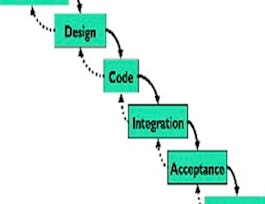From this course, you’ll understand how to make Connected Planning a reality in an organization. Organizations need a vision supported by a focused effort to move from traditional planning and static business modeling to a Connected Planning approach--where data, people, and plans are linked throughout the organization.


Implementing Connected Planning
This course is part of Connected Planning for Business Transformation Specialization
Taught in English


Instructors: Linda Scott
Included with 
Course
What you'll learn
How corporate culture, development of champions, and change management practices impact a Connected Planning implementation
How a Connected Planning technology platform fits into the broader digital ecosystem of an organization
How process mapping and redesign can facilitate a successful Connected Planning implementation
Skills you'll gain
Details to know

Add to your LinkedIn profile
13 quizzes
Course
See how employees at top companies are mastering in-demand skills

Build your subject-matter expertise
- Learn new concepts from industry experts
- Gain a foundational understanding of a subject or tool
- Develop job-relevant skills with hands-on projects
- Earn a shareable career certificate


Earn a career certificate
Add this credential to your LinkedIn profile, resume, or CV
Share it on social media and in your performance review

There are 7 modules in this course
Successfully implementing a Connected Planning approach encompasses a lot more than just replacing legacy systems and spreadsheets with a Connected Planning technology platform. In this short lesson, we'll introduce you to the course and to some of the other critical factors that determine success as an organization begins, and continues, its Connected Planning journey.
What's included
2 videos2 readings1 quiz1 discussion prompt
Implementing Connected Planning is a significant, transformative change for an organization. But organizations rarely get to successful Connected Planning without encountering some challenges along the way. In this week's lessons, we'll explore some common issues related to each of the three pillars of Connected Planning - People, Data, and Plans - that arise when moving from traditional planning to Connected Planning.
What's included
11 readings2 quizzes1 discussion prompt
A successful implementation of Connected Planning requires many things from many people, and not just from individual players in the implementation project team. In this week's lessons, we will explore different ways in which organizational culture, sponsorship, and advocacy can enable Connected Planning.
What's included
9 videos18 readings5 quizzes2 discussion prompts1 plugin
Data issues pose significant challenges for a Connected Planning implementation. In this week's lesson, we explore approaches that can be used to facilitate the clean-up, governance, storage, and transfer of data for Connected Planning purposes. We'll also touch on the necessary components of the broader digital ecosystem necessary for successful Connected Planning.
What's included
2 videos16 readings2 quizzes1 discussion prompt1 plugin
The third pillar of Connected Planning is the plans themselves. Plans are not once-a-year exercises; they are dynamic decision-making tools that help an organization to adapt and adjust course when priorities or conditions change. In this week's lessons, we explore the opportunity to re-engineer planning processes so that they work in a way that leverages the power of Connected Planning - revamping data hand-offs, shifting decision points, or expanding data and drivers, including the use of predictive analytics and artificial intelligence to increase the impact of the plans.
What's included
5 videos8 readings1 quiz1 discussion prompt1 plugin
In this week's lessons, we circle back to people issues and consider how change management and deployment planning, including communication and training, must be competently addressed in order to have a successful Connected Planning implementation.
What's included
4 videos14 readings2 quizzes1 discussion prompt2 plugins
Implementing a Connected Planning approach within an organization is about much more than just adopting a Connected Planning technology platform. The final requirements for this course are to complete and submit a project and to complete a peer review for two other learners' projects. In this project, you will assess your organization's readiness to address and overcome challenges that often impede Connected Planning implementation. If you do not have experience working in an organization, you will need to interview someone about their organization to complete the project.
What's included
3 readings1 peer review
Offered by
Recommended if you're interested in Business Strategy

LearnKartS

Coursera Project Network

Università di Napoli Federico II
Why people choose Coursera for their career




New to Business Strategy? Start here.

Open new doors with Coursera Plus
Unlimited access to 7,000+ world-class courses, hands-on projects, and job-ready certificate programs - all included in your subscription
Advance your career with an online degree
Earn a degree from world-class universities - 100% online
Join over 3,400 global companies that choose Coursera for Business
Upskill your employees to excel in the digital economy
Frequently asked questions
Access to lectures and assignments depends on your type of enrollment. If you take a course in audit mode, you will be able to see most course materials for free. To access graded assignments and to earn a Certificate, you will need to purchase the Certificate experience, during or after your audit. If you don't see the audit option:
The course may not offer an audit option. You can try a Free Trial instead, or apply for Financial Aid.
The course may offer 'Full Course, No Certificate' instead. This option lets you see all course materials, submit required assessments, and get a final grade. This also means that you will not be able to purchase a Certificate experience.
When you enroll in the course, you get access to all of the courses in the Specialization, and you earn a certificate when you complete the work. Your electronic Certificate will be added to your Accomplishments page - from there, you can print your Certificate or add it to your LinkedIn profile. If you only want to read and view the course content, you can audit the course for free.
If you subscribed, you get a 7-day free trial during which you can cancel at no penalty. After that, we don’t give refunds, but you can cancel your subscription at any time. See our full refund policy.


